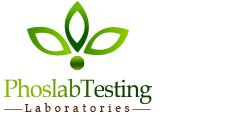- HOME
- Services
- Environmental Testing
- BTEX Testing Services
- Volatile Organic Compound (VOC) Testing
- Total Recoverable Petroleum Hydrocarbons Testing and Analysis
- Pesticide Testing and Analysis
- Polycyclic Aromatic Hydrocarbons Testing
- Hazardous Waste
- Wastewater Testing
- Soil Testing
- TCLP Testing
- SPLP Testing
- RCRA Metals TCLP Analysis
- Agriculture Testing Laboratory
- Brownfield Testing Laboratory
- Mineral Testing Laboratory
- Chemical Testing Laboratory
- Field Sampling
- Phoslab Environmental Consulting
- Resources
- About Us
- Contact Us
- PhosBlog
SPLP Testing
Phoslab Environmental Testing Services
 The Synthetic Precipitation Leaching Procedure (SPLP) is one of the many environmental services we offer at Phoslab. Leach tests are important in revealing the soluble phases of a sample, predicting geochemical effects of flushing a material, helping to quantify toxic mobilization, and revealing the organic/inorganic constituents that are made available to organisms.
The Synthetic Precipitation Leaching Procedure (SPLP) is one of the many environmental services we offer at Phoslab. Leach tests are important in revealing the soluble phases of a sample, predicting geochemical effects of flushing a material, helping to quantify toxic mobilization, and revealing the organic/inorganic constituents that are made available to organisms.
SPLP testing is often the method of choice for determining cleanup standards for inorganic and low mobility organic compounds. This method is helpful in realistically estimating the leaching potential of numerous contaminants under regular field conditions.
About SPLP
The Synthetic Precipitation Leaching Procedure is a quick and inexpensive method to determine:
- The mobility/leachability of low volatility organic and inorganic analytes in liquids, soils, and wastes.
- The measure of desorption of contaminants from soil (rather than adsorption).
- The possibility of leaching metals into ground and surface waters.
- A site-specific impact to groundwater soil remediation standard.
Since the test uses custom pH levels to simulate rainfall in a particular geographic region, this test is often recommended over other methods when determining how to proceed with ground water remediation efforts at contaminated sites. Test results come back in less than 24 hours.
Many factors can affect the leaching potential of organic constituents: pH, redox conditions, liquid-to-solid ratio, solubility, partitioning, presence of organic carbon, and non-aqueous phase extraction. Once SPLP testing shows what’s happening at the site, a sensible remediation plan can be assembled.
Contaminants examined with SPLP testing
Hundreds of possible contaminants are measured using SPLP testing, including but not limited to:
- Acetone
- Acrolein
- Aluminum
- Arsenic
- Benzene
- Bromoform
- Carbon Disulfide
- Chloroform
- Cyanide
- DDT
- Lead
- Mercury
- Methane
- Polychlorinated Biphenyls
- Styrene
- Toulene
- Trichlorophenol
- Vinyl Chloride
SPLP testing methods
SPLP testing method 1312 from the USEPA SW-846 compendium of analytical and test methods is a single point leachate test designed to simulate very specific precipitation conditions. Samples are preliminarily evaluated for solids and particle size. Using a 1:20 solid-to-liquid ratio, the samples are then leached with extraction fluid calibrated to pH depending on the region of the country where the sample is located. We can then compare the concentrations of potentially hazardous constituents with the levels identified by EPA regulations.
SPLP vs. TCLP testing
There are two primary types of metal testing: the Toxicity Characteristic Leaching Procedure (TCLP) and the Synthetic Precipitation Leaching Procedure (SPLP). While TCLP is used for waste disposal purposes, the SPLP is used to determine the potential for soil contamination to leach into groundwater. An SPLP test will help determine acceptable in-situ soil concentrations. SPLP is a good test to assess how the surface-level materials move and leach after a heavy rainfall. However, due to the test limitations, TCLP is a better measure for comprehensive toxicity testing, as the only test approved under the Resource Conservation and Recovery Act to determine the exact amount of leachate that certain materials can produce.
Alternatives to SPLP testing procedures
In some cases, SPLP testing may be supplemented by additional testing methods. This is because:
- Pore size of colloidal inorganics may be underestimated because leachate is filtered through a 0.6-0.8 µm filter, so anything above this size may be underrepresented in the test data.
- Interconversion of metal species with multiple oxidation states may occur, since the oxidation/reduction potential of samples cannot be preserved.
- Testing for volatile organic contaminants is problematic. Volatile soil organic samples (as defined by Henry’s law) must be collected using methanol preservation or the Encore® sampler — but Methanol affects contaminant desorption in an SPLP sample, and the Encore® sampler would require multiple composited samples for total soil analysis.
Phoslab offers VOC testing, TCLP testing, and many alternative environmental testing services to meet your needs.
SPLP testing labs in Florida
Phoslab is an SPLP testing lab in Florida with a trusted reputation dating back nearly 50 years. Our employees consist of highly credentialed chemists, biologists, and geologists. We have accreditation from the State of Florida Department of Health and the State Surgeon General. As a full-service lab, Phoslab adheres to the strictest quality standards and uses the most advanced technology available to ensure accurate results. Call today to discuss your SPLP testing needs.
Additional “SPLP testing” resources:
- EPA, SW-846 Test Method 1312: Synthetic Precipitation Leaching Procedure, https://www.epa.gov/hw-sw846/sw-846-test-method-1312-synthetic-precipitation-leaching-procedure
- USGS – Leaching Studies, https://pubs.usgs.gov/of/2003/ofr-03-210/VIIIA_Leaching_Studies.pdf
